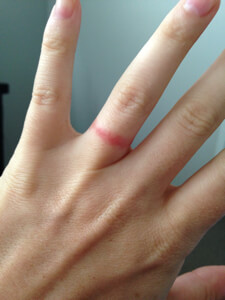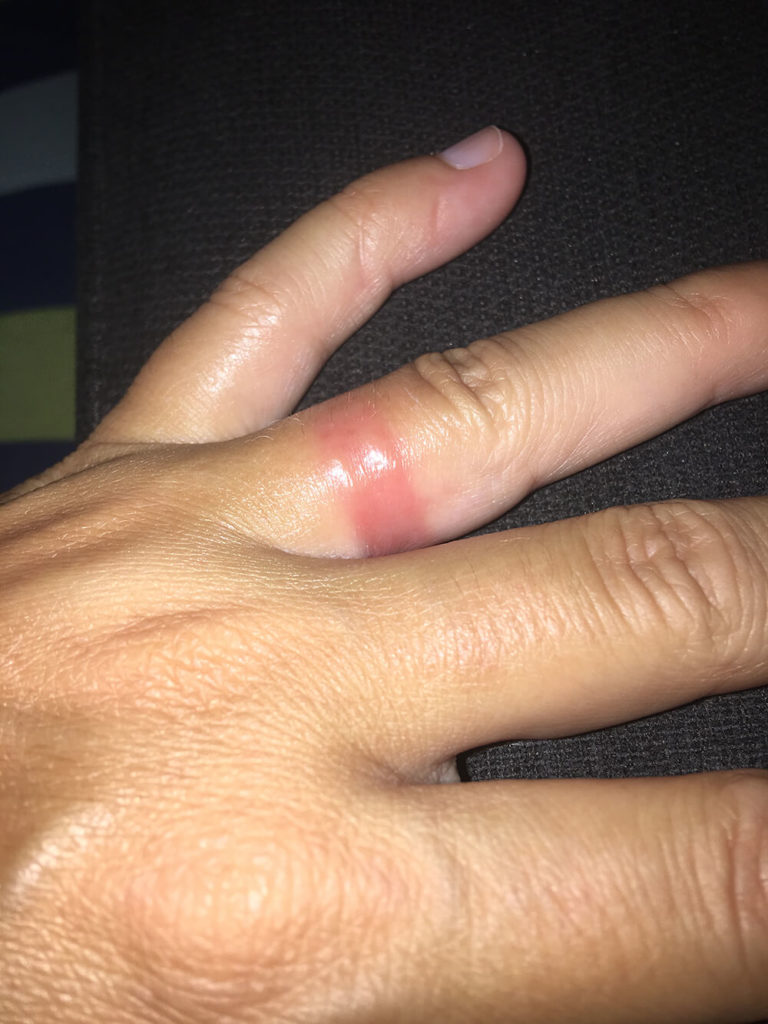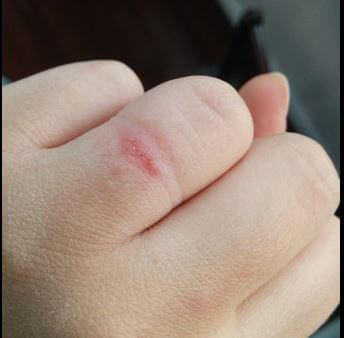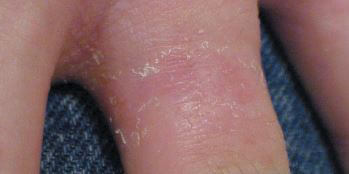Jewelry is something that is meant to be enjoyed. The last thing you want is for your jewelry to hurt or irritate you.
This is most common in earrings and rings since they have the most amount of direct contact with your skin. The most frequent metal to cause reactions is nickel. Some people are born with skin that is very sensitive to nickel. These people cannot wear earrings and/or rings with nickel in them, and if they do, a rash may start to form within a few hours. If left on for extended periods of time, it can lead to more extreme irritation and even cause bleeding.
This allergic reaction is referred to as contact dermatitis, which includes symptoms such as swelling, rashes, or pain. This sensitivity is typically realized early in life when someone has been given a pair of earrings or ring as a child.


Traditional silver and white gold jewelry contains nickel to give it it’s color Individuals with nickel allergy should go with pieces made of yellow gold, rose gold, titanium, or surgical steel since they contain hypoallergenic alloys. They may also choose a white gold mixture that uses palladium or other hypoallergenic metals.
It is important to note the allergic reaction will happen immediately. This is important to note because many people confuse skin irritation with an allergic reaction. These can be easily confused with an irritation caused by a buildup of dirt and germs inside the ring. One way this can happen believe it or not, is frequent handwashing. Traditional, plain wedding bands will not create an issue, due to there being no cavities for the water to be trapped in. The problem is that most rings crafted for women will have gems and other stones as well as more ornate patterns.
These patterns and more ornate settings typically create cavities on the inside of the ring. These cavities are where dirt and skin buildup occur. This is not a problem and normally will just create a dirty ring that needs to be cleaned. However, when this person repeatedly cleans their ring, it creates an area that is always moist with a buildup of germs, dirt, and human tissue.
This perfect storm is an ideal breeding ground for germs since your skin is wet. Also, this repeated washing is robbing your skin of its natural oils making them crack and the skin weaker. If the irritation on your skin is just a faint, red rash centrally located around the cavity portion of the ring, it most likely caused from a germ buildup, and it is affecting the skin.


This has always been a problem when it comes to jewelry, but now in the days of Covid, people are washing their hands more than ever. Ironically, frequently washing your hands is creating more germs under your ring. This can also rid your skin of all it’s essential oils that it needs to create a strong barrier. To prevent a buildup of bacteria, you should remove your rings before washing your hands. If you forget to do so, make sure you remove them and pat them dry before returning them to your hands.
If you do end up with a rash from your jewelry, healing it is very simple. All you need to do is remove the jewelry and allow your skin some time to heal. You can also bring the piece into a jeweler and request they thoroughly clean it, removing any debris and buildup. Most jewelry stores do not charge for a quick cleaning. This is a good way to keep them looking brilliant as ever. Once your irritation has fully healed, you may begin wearing your ring again.
To Recap:
- Know the differences between a skin irritation and an allergic reaction. Ask yourself, how quickly did it start and how red is it?
- An allergic reaction will occur wherever your skin is in contact with the metal, like a red ring on the skin around the finger.
- If you are frequently washing your hands, remove your rings first or dry them after moving your ring from its normal position.
- See your jeweler at least twice a year to get the ring cleaned and remove any debris.
Now, let’s enjoy our Jewelry.

Sergio B.
Metals In Time
